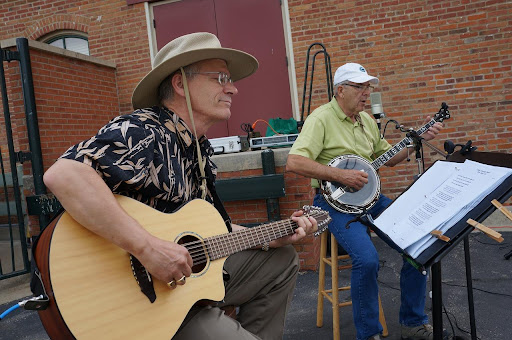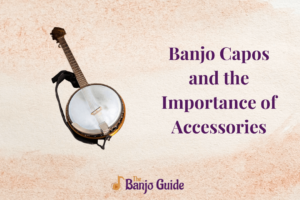Do you want to learn all about the banjo capos? We’ve put together a quick guide to help you learn about banjo capos. We have listed some of the most commonly asked questions about banjo capos below. So, let’s begin!
What is a banjo capo and how does it work?
A banjo capo is a device used to raise the pitch of the instrument. These tools are commonly used by banjo players for changing the key of their songs.
But why do I need a special capo for banjo?
It is essential to have a special capo in order to play exactly what you want. However, the sound of the notes will be associated with a different key than the one you learnt for a given song.
You can change the key of your banjo easily and quickly with a banjo capo. A few banjos have elevated strings, so you need a fifth-string capo.
You can’t use guitar capo on banjo because they are made in different widths to perfectly fit each instrument.
Different types of banjo capos and which one is right for you
There are many different types of capos available in the market. Earlier, some banjo capos like the “Bill Russel Double Action” used stretch elastic. If you were not careful with these capos, they could pull the strings out of tune.
Nowadays, banjo capos allow the player to adjust the tightness of the capo against the strings. This feature saves the player from excessively tightening the capo. While too much tightening would make the strings sharp, if the capo is too loose, then it will cause the banjo strings to not move fully.
We recommend that you place the banjo capo close against the fret. You should tighten it enough for the banjo strings to produce a clear sound.
A great way to adjust the capo is to push the bar of the capo against the strings. Keep holding the capo while tightening the capo screw from the left hand. Be careful, or you will end up bending the banjo strings.
Once you have the banjo capo in place, get your hands on your banjo tuner to check the strings. You will still be in tune when you choose the right banjo capo for your musical instrument. In most cases, you will only have to make a small adjustment.
So, which banjo capo is the best?
Shubb sliding 5th string capo is one of the best banjo capos. This capo is made with thin and flat rails. The rail has been screwed into the side of the neck of the banjo. This capo has a thumbscrew-operated “finger.” The “finger” pushes down on the fifth string of the banjo.
And what is a railroad spike banjo capo?
The railroad spikes model is one of the most convenient ways to capo the fifth string of your banjo. Railroad spikes are tiny spikes that are great for quickly switching between different banjo keys.
Railroad spikes can even be used in conjunction with a capo. Railroad spikes are mainly installed on the banjo’s 7th, 9th, and 10th fret.
Tips for using a banjo capo effectively in your playing
Wondering how to use a banjo capo? Check out these few great tips for using a banjo capo effectively while you are playing the banjo.
- Avoid using the banjo capo above the fifth fret. When you use a banjo capo above the fifth fret, it feels like you are cutting the neck of the banjo in half.
- Using a banjo capo for the best sound for bluegrass songs in banjo keys other than the G key is best.
- If you are playing songs in the keys C, D, F, and G at any tempo, then you should play the banjo out of open G.
- Learning how the tuning of your banjo reacts to each fret is another great way to learn how to quickly and effectively tune your banjo.
- Learning good banjo capo placement and tuning techniques is key to engaging in a more enjoyable experience.
- To raise the pitch of the fifth string of the banjo, the banjo capo shouldn’t cover it.
Common Misconceptions about banjo capos and the truth behind them
One of the most common misconceptions about banjo capos is that it is called “cheater.” No doubt banjo capos are cheaters in a sense. But that does not mean that you are a poor musician if you use it.
Using a banjo capo, a player can play everything they know in an open G tuning. All the banjo player has to do is place the capo on another fret to change the key.
Banjo capo maintenance and care: keeping your capo in top shape
A few ways to keep your banjo capo in top shape are as follows:
- The banjo capo should always be placed in the fret behind the bar.
- You should leave a large space between the banjo capo and the fret bar.
- You should avoid placing the capo directly on the top of the fret bar.
- When you are not using the capo, you should make it a habit to keep it inside a pouch. It will help in keeping the capo clean.
Conclusion:
Banjo capos are surely one of the best tools for all banjo players. From helping raise the banjo pitch to quickly and effectively tuning the banjo, the right banjo capo is what you need to keep your banjo game strong. To ensure your capo lasts for several years, you should always keep it covered in a pouch when it is not in use.




